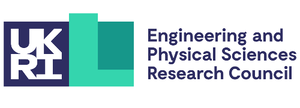

A cross-disciplinary team of researchers from the Universities of York and Ulster are working together on an exciting new EPSRC-funded project, Nervous Systems, to design and use artificial spiking neural networks (SNNs) as embodied electronic nervous system, developing novel nervous system-inspired design methodology and hardware architecture, and applying them to real world tasks including autonomous fault detection and prediction in electronic systems.
In complex living organisms, the nervous system is the part that detects environmental changes and internal anomalies that impact them, by transmitting signals between different parts of the organism. The nervous system works in tandem with the endocrine system, triggering appropriate regulatory or repair responses. In Nervous Systems we envisage a self-aware electronic system with an embedded artificial nervous system that can sense its state and performance, and exploit the structure and computational power of these kinds of bio-inspired mechanisms for autonomous fault tolerance.
We are happy to announce the International Workshop on Reliable and Sustainable Neuromorphic Hardware, organised with generous support by the EPSRC. The workshop will take place from 28th to 30th of May 2025 in York, UK. Please have a look here to learn more and participate!
Our 4 summer internship projects are currently in full swing and we have four excellent students who are working with us on a range of topics:
Nervous Robot
Spiking Neural Network Breadboard
Radiation Hard Nervous Hardware
Neuromorphic MNIST with Microcircuits






Martin Trefzer
Amrutha R K
Andy Tyrrell
Andrew Walter
Shimeng Wu
Jim Harkin
Liam McDaid
Malachy McElholm
Nidhin Thandassery Sumithran
Balaji Venu (ARM)
Brendan Moran (ARM)
Matt Rowlings (TAS-UK)
Michaela Blott (Xilinx)
Michael Walshe (TAS-UK)
Talk 1 - Introduction to SNNs.
Talk 2 - Neuromorphic Hardware Overview.
Talk 3 - Applications of SNNs and Neuromorphic HW.
Talk 4 - Nervous Systems and Microcircuits.
This tutorial introduces simulation of spiking neural networks (SNNs) using the Brian2 simulator with Python. You will run examples of a small 5-node SNN, which is fully-connected, as well as some SNN microcircuits that were produced in the Nervous Systems project, which are capable of recognising different characters in text. Below are two links, one for the tutorial instructions, and another for the code needed to run the tutorial.
Instructions download.
Code download.
This tutorial introduces simulation of spiking neural networks (SNNs) using the Xilinx Vivado simulator with VHDL. You will run examples of a small SNN, which is based on a leaky intergate and fire model implemented in VHDL. You will run examples in simulation, although the SNN model, which was developed as part of the Nervous Systems project, is aimed at FPGA implementation. Below are two links, one for the tutorial instructions, and another for the code needed to run the tutorial.
Instructions download.
Code download.